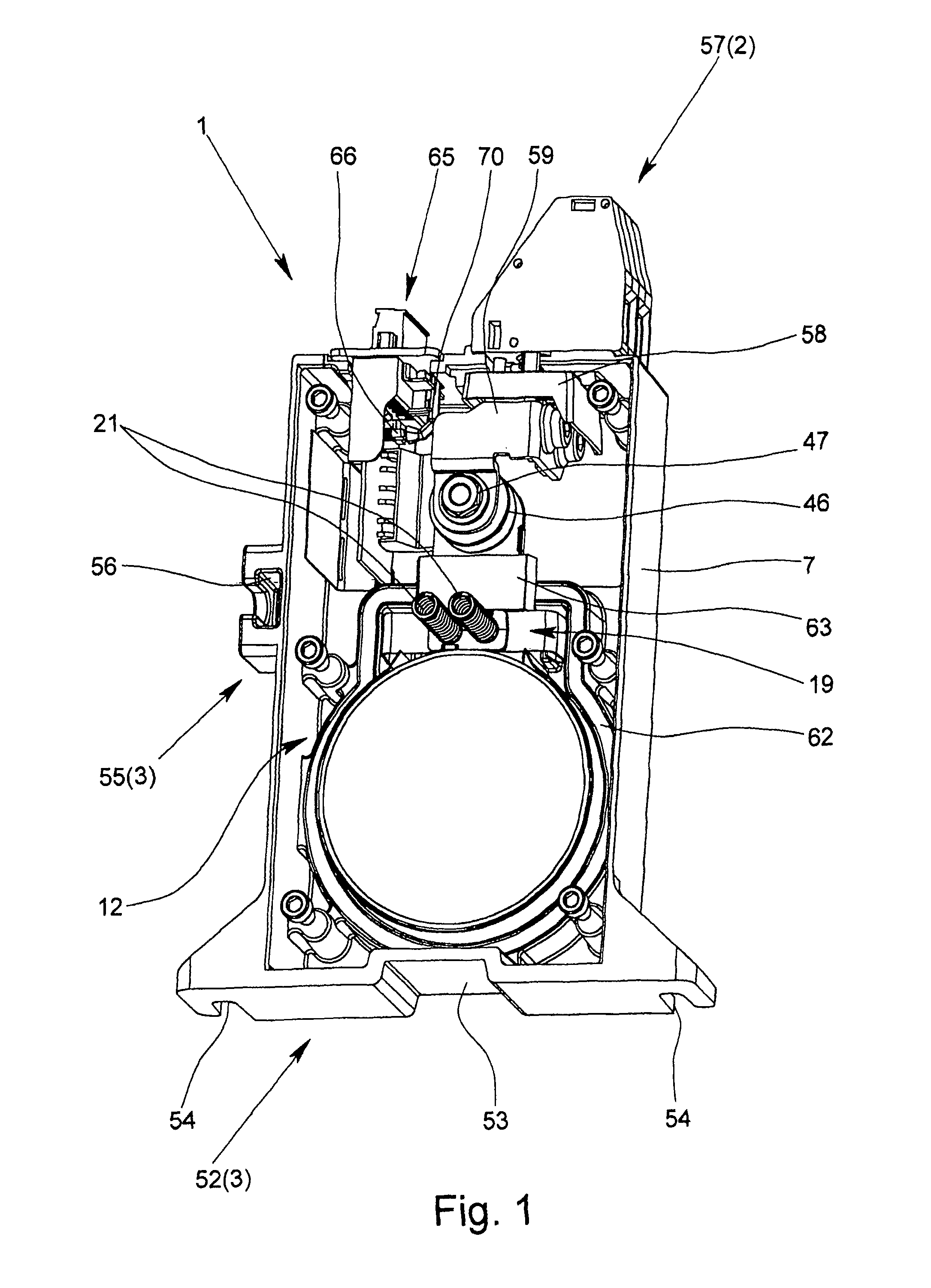Overvoltage protection element
a protection element and overvoltage protection technology, applied in the direction of overvoltage protection resistors, resistor housings/enclosements/embeddings, emergency protective arrangements for limiting excess voltage/current, etc., can solve the problem of unwanted increase of leakage current of varistor at operating voltage, damage of components within the overvoltage protection element or the overvoltage protection element overall, and the plastic housing surrounding the varistor is not easily accessible and easily damaged. , to achieve th
- Summary
- Abstract
- Description
- Claims
- Application Information
AI Technical Summary
Benefits of technology
Problems solved by technology
Method used
Image
Examples
first embodiment
[0058]In the first embodiment according to FIGS. 1, 2, 3a, and 3b, within the housing there is only one short circuit switch which has a shorting jumper 19, an insulating retaining element 20 which is mechanically connected to the shorting jumper 19, two spring elements 21 and one retaining metal 22. In the normal state of the varistors 4, 5 which is shown in FIG. 3a, the shorting jumper 19 is located spaced apart from the middle electrode 6, although the retaining element 20 is exposed to a spring force in the direction to the middle electrode 6 by the spring elements 21 which are compressed against their spring force. In the normal state of the varistors 4, 5 the shorting jumper 19 is kept in the first position spaced apart from the middle electrode 6 such that the retaining element 20 is supported with a spacer element 24 which projects through an opening 23 in the middle electrode 6 on the retaining metal 22, which is connected to the bottom of the middle electrode 6 via a solde...
second embodiment
[0063]In the second embodiment according to FIGS. 5 and 6, one short-circuit switch at a time is assigned to the two varistors 4, 5. In this embodiment the middle electrode 6 is connected to a connection electrode 30, which is guided through one housing penetration 31 insulated into the housing interior. The middle electrode 6 can be connected to an active conductor via the connecting electrode 30. The second connecting regions 15 of the two varistors 4, 5 each make contact with the connecting metal 32 which is located on the side of the varistors 4, 5 facing away from the middle electrode 6. Between the housing halves 7, 8 and the connecting metals 32 there is one insulating element 33 at a time which can be formed for example by a silicone film or an insulating paper, as a result of which the two connecting metals 32 are insulated relative to the housing halves 7, 8.
[0064]The two short-circuit switches have a flexible conductor section 34, an actuating pin 35 and a spring element ...
PUM
 Login to View More
Login to View More Abstract
Description
Claims
Application Information
 Login to View More
Login to View More - R&D
- Intellectual Property
- Life Sciences
- Materials
- Tech Scout
- Unparalleled Data Quality
- Higher Quality Content
- 60% Fewer Hallucinations
Browse by: Latest US Patents, China's latest patents, Technical Efficacy Thesaurus, Application Domain, Technology Topic, Popular Technical Reports.
© 2025 PatSnap. All rights reserved.Legal|Privacy policy|Modern Slavery Act Transparency Statement|Sitemap|About US| Contact US: help@patsnap.com



